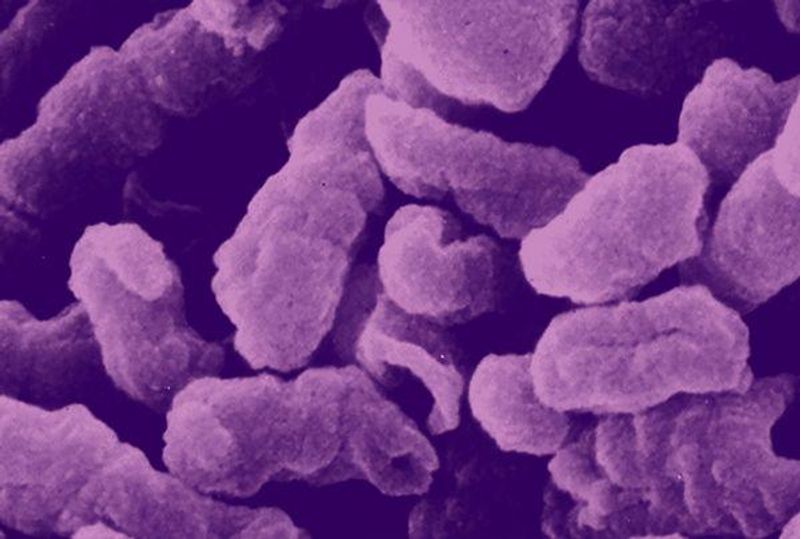mRNA Technology: Vaccines and Beyond

We're using mRNA with the goal of developing new, life-saving vaccines and to address long-standing challenges in cancer, immune-mediated diseases, and rare diseases.

Messenger RNAs (mRNA) are essential molecules in our cells that serve as the link between our DNA and all biological activities in our bodies.1 We produce mRNA continually: its purpose is to help convert the information encoded within our DNA, our genetic blueprint, into the proteins we need to live. Sanofi is harnessing the power within these molecules and using the body’s natural molecular machinery to develop new vaccines and medicines, all based on helping the body assemble the proteins it needs to fight disease.
mRNA vaccines
mRNA science has given our R&D teams more ways to develop vaccines against different infectious diseases,2 and to keep pace with emerging health threats.
Vaccines often contain a small fragment of a virus or bacteria, for example a unique protein that the pathogen uses like a key to enter into cells.3 mRNA vaccines are designed to instruct certain cells in the body to produce a "mimic" of that viral or bacterial protein directly. This mimic protein, or antigen, is recognized by the immune system, which mounts a defense, remembers it, and recalls it to fend off future infections before disease can set in.
- The first step in the process is to identify which protein to mimic. It must be a protein with a high potential to trigger a protective immune response against the target virus or bacteria. For example, the protein's presence in the body should trigger the production of antibodies that can neutralize it before it enters a cell.
- The next step is to develop mRNA with the exact genetic sequence needed to instruct cells to make the antigen.
- Once this has been achieved, the mRNA can be encased in a nanoparticle made primarily of lipids (fats). Our proprietary lipid nanoparticles are designed to keep mRNAs intact until they enter target cells in the body.
Our mRNA technology platform helps researchers identify and select an mRNA code, develop the mRNA vaccine candidate, and ensure it can be delivered where it's needed: to muscle cells in the body.

Our teams are working to develop mRNA vaccine candidates with optimal tolerability and thermostability.
- Tolerability: Controlling the frequency and severity of side effects.
- Thermostability: Developing vaccines that are stable within a wide range of temperatures, making it easier to transport them over long distances and store them for longer periods of time.

What are Lipid Nanoparticles?
Lipid nanoparticles (LNPs) are small, protective vesicles made of lipids that are used to deliver messenger RNA to the right cells. mRNA degrades very easily and, if injected into the body alone, it can be attacked and destroyed. This is where LNPs have a role to play. They act like protective shuttles that can transport mRNA into its intended target.
We have been conducting research on the design and formulation of LNPs with different lipid combinations, ratios, and other features. The aim is to improve the effectiveness of LNPs in delivering mRNA to specific cells. We have also acquired several biotech companies to bolster their LNP platforms and develop unique clinical candidates that have the potential to deliver first and best-in-class products in gene editing, oncology, rare disease, influenza, acne, chlamydia, RSV and more.

Our vaccine toolbox
mRNA is a welcome addition to our vaccine development toolbox, which includes a range of technologies, from recombinant proteins to purified viral and bacterial components. We also use approaches such as conjugated polysaccharides to develop vaccines for diseases in which the target is a sugar, rather than a protein. Our teams use machine learning and other techniques to help them identify the most broadly protective antigens, so we have the greatest chance of beating viruses at their own game.
mRNA therapeutics
Beyond vaccines, our teams are developing therapeutic mRNA to address challenges in cancer, immune-mediated diseases, and rare diseases. Many of these diseases occur when a person is unable to produce an important protein, or producing it incorrectly.4,5
Our mRNA Therapeutics platform enables researchers to design therapeutic mRNAs that are tailored to specific cells, so they can potentially repair the cell's ability to make certain proteins. The platform is designed to be flexible and scalable: it helps our teams develop any protein-coding mRNA, as well as the type of lipid nanoparticle needed to deliver it to a specific type of tissue in the body. The ability to restore protein function in this way is potentially transformative for many diseases.
This page refers to Sanofi products that are currently under development. The safety and efficacy of these investigational drugs has not been evaluated by any regulatory authority.
References
- Wellcome Trust (2018) From DNA to protein. Accessed on June 2023
-
Xu S, Yang K, Li R, Zhang L (2020) mRNA Vaccine Era-Mechanisms, Drug Platform and Clinical Prospection. Int J Mol Sci 21(18); DOI: 10.3390/ijms21186582
-
Center for Disease Control and Prevention (2018) Understanding How Vaccines Work. Accessed on June 2023
- Sinclair A (2002) Genetics 101: detecting mutations in human genes. CMAJ 167:275-279
- Reynaud E (2010) Protein Misfolding and Degenerative Diseases. Nature Education 3:28


